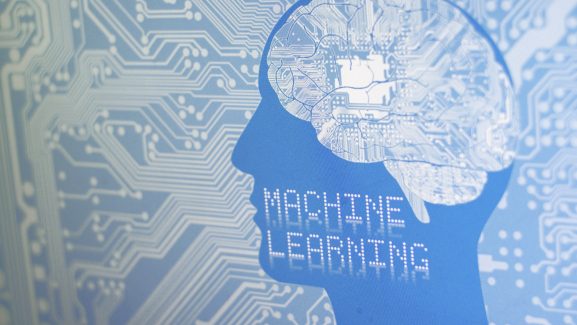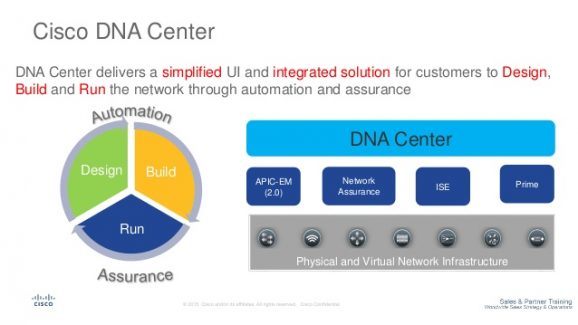September 14, 2018 by Siobhan Climer
What is intent-based networking? Let’s start with the network. The network you use connects everything, and it relies on human input and strategy to guide those connections. Intent-based networking systems (IBNS) change this reality. In the past, network administrators were responsible for both defining a state of the network and implementing those policies manually. Today, intent-based networks use intent to inform learning, contextual awareness, and security.
The future of the network is machine learning.
What Is Intent-Based Networking?
IBNS use machine learning algorithms to support the network administrator, automating network orchestration software policy implementation to achieve increased network productivity. IBNS capture business intent and enable the network to adapt to changes in the architecture.
Present-day enterprise networks lack algorithmic validation, and translation is completely manual. Intent-based networking is defined by the word intent; in essence, the network’s business intent drives automation.
What Are The Benefits?
 If you haven’t heard the sentence “Technology is always changing,” you haven’t been listening. The trick though is not recognizing change but preparing for it. Adapting to change, and innovating for changes yet to come – that’s where businesses get stuck. And for good reason; innovation isn’t easy. So what is intent-based networking and how does it affect innovation?
If you haven’t heard the sentence “Technology is always changing,” you haven’t been listening. The trick though is not recognizing change but preparing for it. Adapting to change, and innovating for changes yet to come – that’s where businesses get stuck. And for good reason; innovation isn’t easy. So what is intent-based networking and how does it affect innovation?
Intent-based networking is different because it uses machine-learning to innovate for you. It’s a network that predicts, protects, and adapts. The challenges in IT now are scalability, agility, and flexibility. IBNS help businesses overcome those obstacles.
- Simplified Operations
- Proactive Management
- Security
- Innovation
IBNS help you centralize network policy controls and integrate IT workflows. Improved analytics enable network monitoring. This means you can isolate, report, and respond to issues before they become big problems. IBNS work in real time to detect and contain threats, putting AI in control of security operations.
Cisco’s intent-based networking is ideal for businesses preparing for change because it is built on an open platform, so not only is it ready for today, but it is learning to adapt for the future.
Cisco DNA Center Platform
 Cisco Digital Network Architecture (DNA) came to market last year as a way to help networks integrate and adapt, two ideas that sometimes work against one another.
Cisco Digital Network Architecture (DNA) came to market last year as a way to help networks integrate and adapt, two ideas that sometimes work against one another.
“Modern networks need to be both more integrated, and yet more flexible,” writes Scott Harrell, SVP and General Manager with Cisco’s Enterprise Networking Business.
Cisco’s DNA Center treats every network device, regardless of its connection, as a part of one unified network fabric. As far as network infrastructure modernization, Cisco DNA Center touches on something enormous; networks have changed in piecemeal, non-strategic ways, leaving businesses with multiple technology platforms, siloed network devices, increased security holes, and an error-prone method of maintaining the network (people).
Cisco’s DNA Center platform deals with each of these challenges in turn, offering a single, 360-degree view of a newly integrated network. Machine-learning algorithms capture new connections network administrators might miss, and, most importantly, security breach concerns are addressed before they are infiltrated.
Plus, since DNA Center is an open platform, people can now better tailor protocols for their network, utilizing analytics, automating processes, and delivering a better, more secure experience to employees and customers alike.
Bridge Between Business And IT
What is intent-based networking? It provides a bridge between two worlds often separated: business and IT. When aligned, these two spheres can adapt for today, innovate for tomorrow, and build a business strategy that is integrated, secure, and ready for a world where “technology is always changing.”
Like what you read?
Contact us today to discuss network infrastructure strategy.
About Mindsight
Mindsight, a Chicago IT consultancy and services provider, offers thoughtfully-crafted and thoroughly-vetted perspectives to our clients’ toughest technology challenges. Our recommendations come from our experienced and talented team of highly certified engineers and are based on a solid understanding of our clients’ unique business and technology challenges.
About The Author
Siobhan Climer, Science and Technology Writer for Mindsight, writes about technology trends in education, healthcare, and business. She previously taught STEM programs in elementary classrooms and museums, and writes extensively about cybersecurity, disaster recovery, cloud services, backups, data storage, network infrastructure, and the contact center. When she’s not writing tech, she’s writing fantasy, gardening, and exploring the world with her twin two-year old daughters. Find her on twitter @techtalksio.
